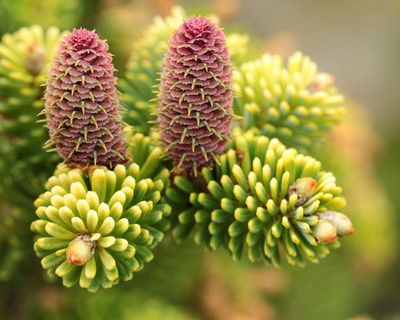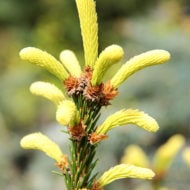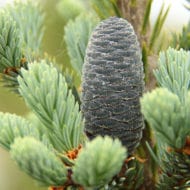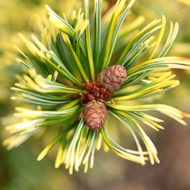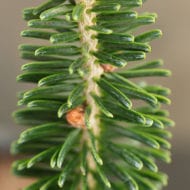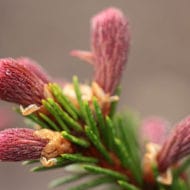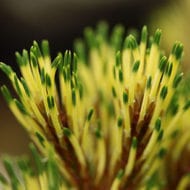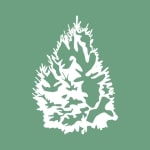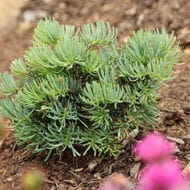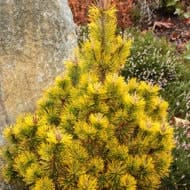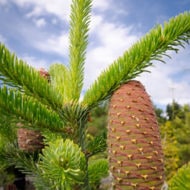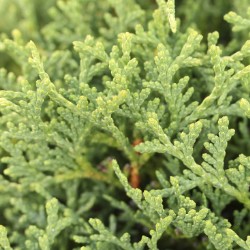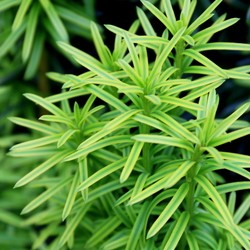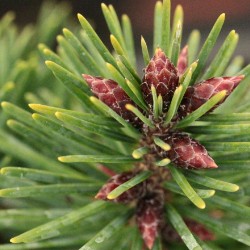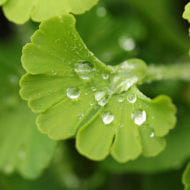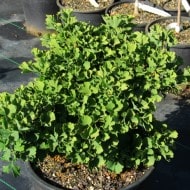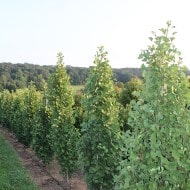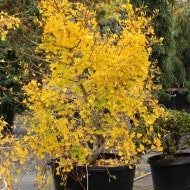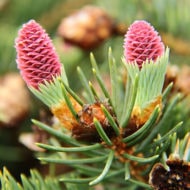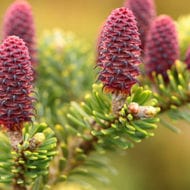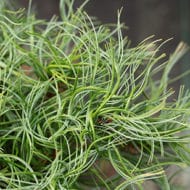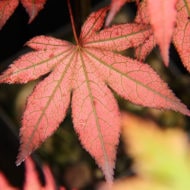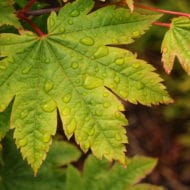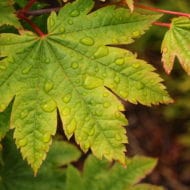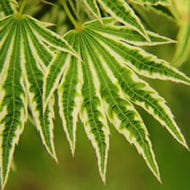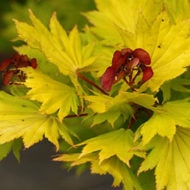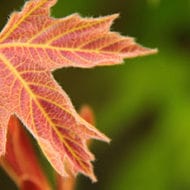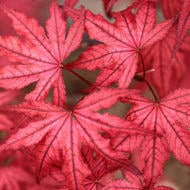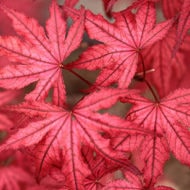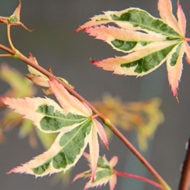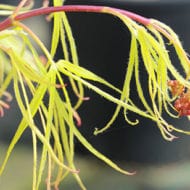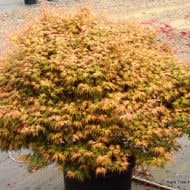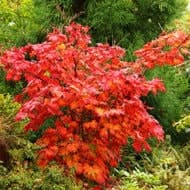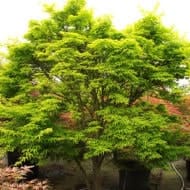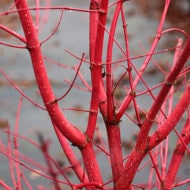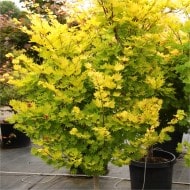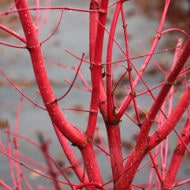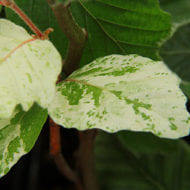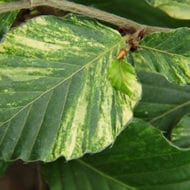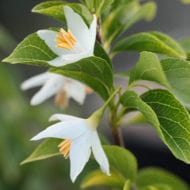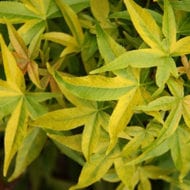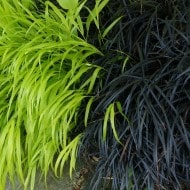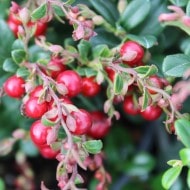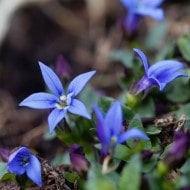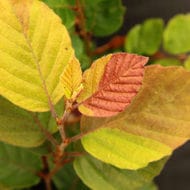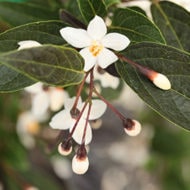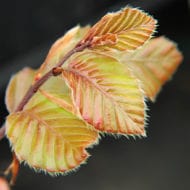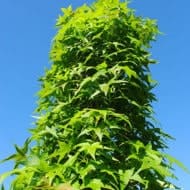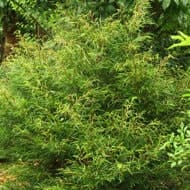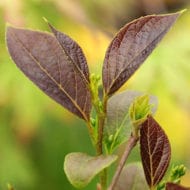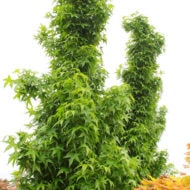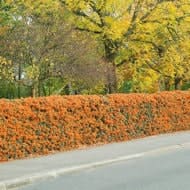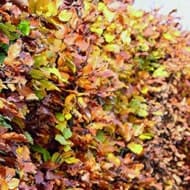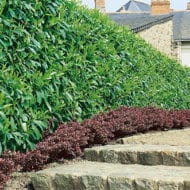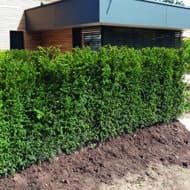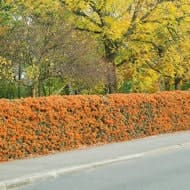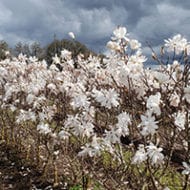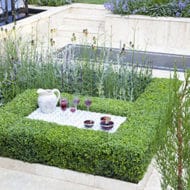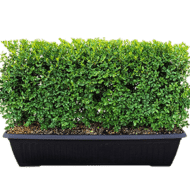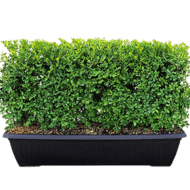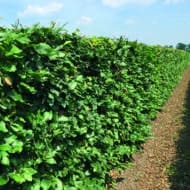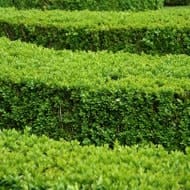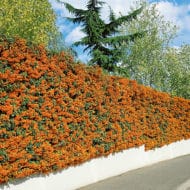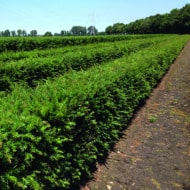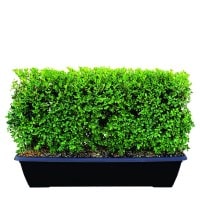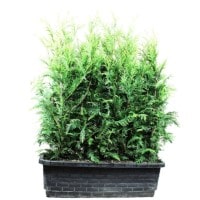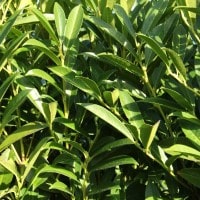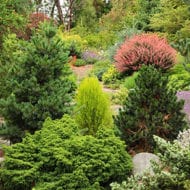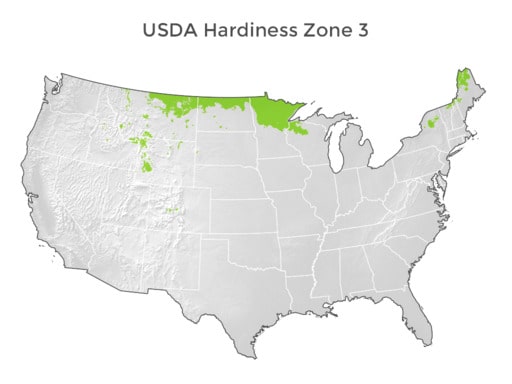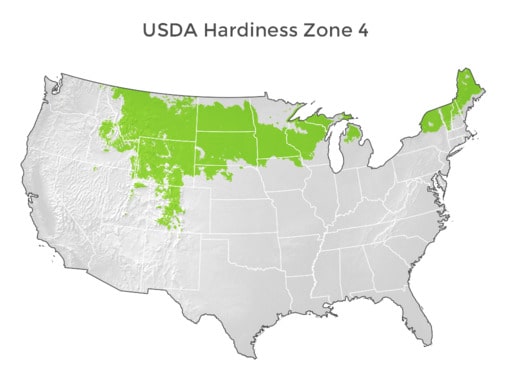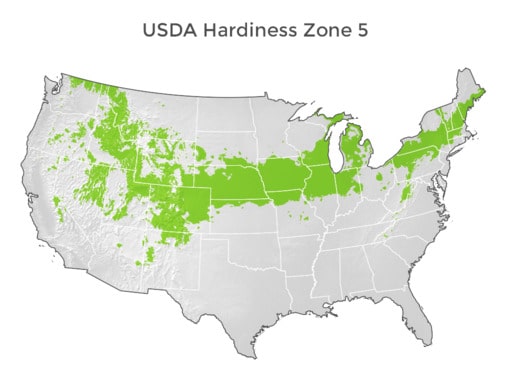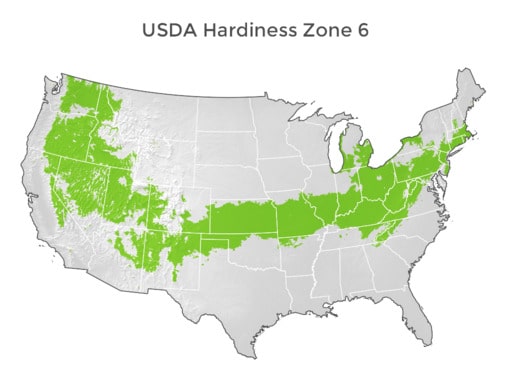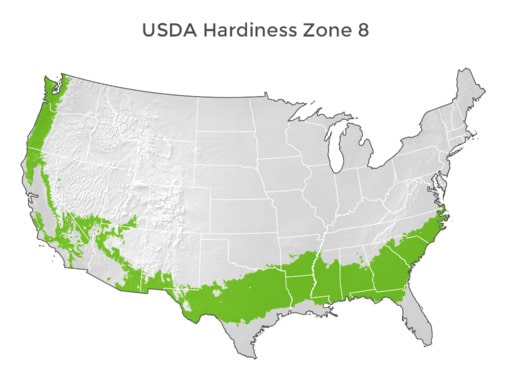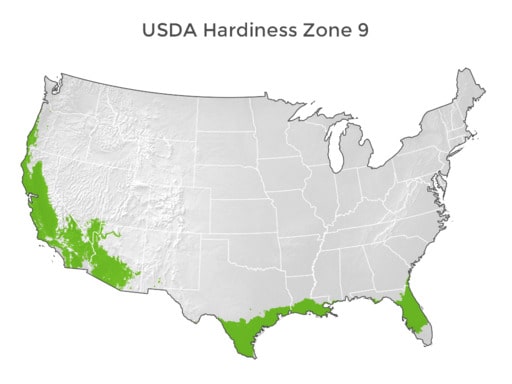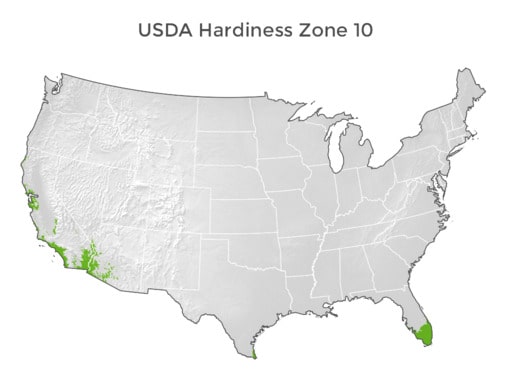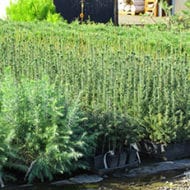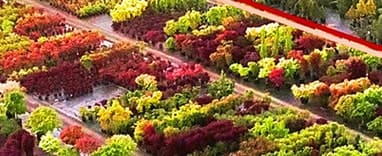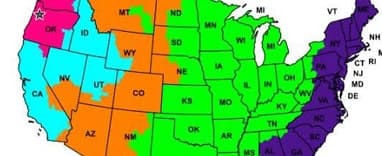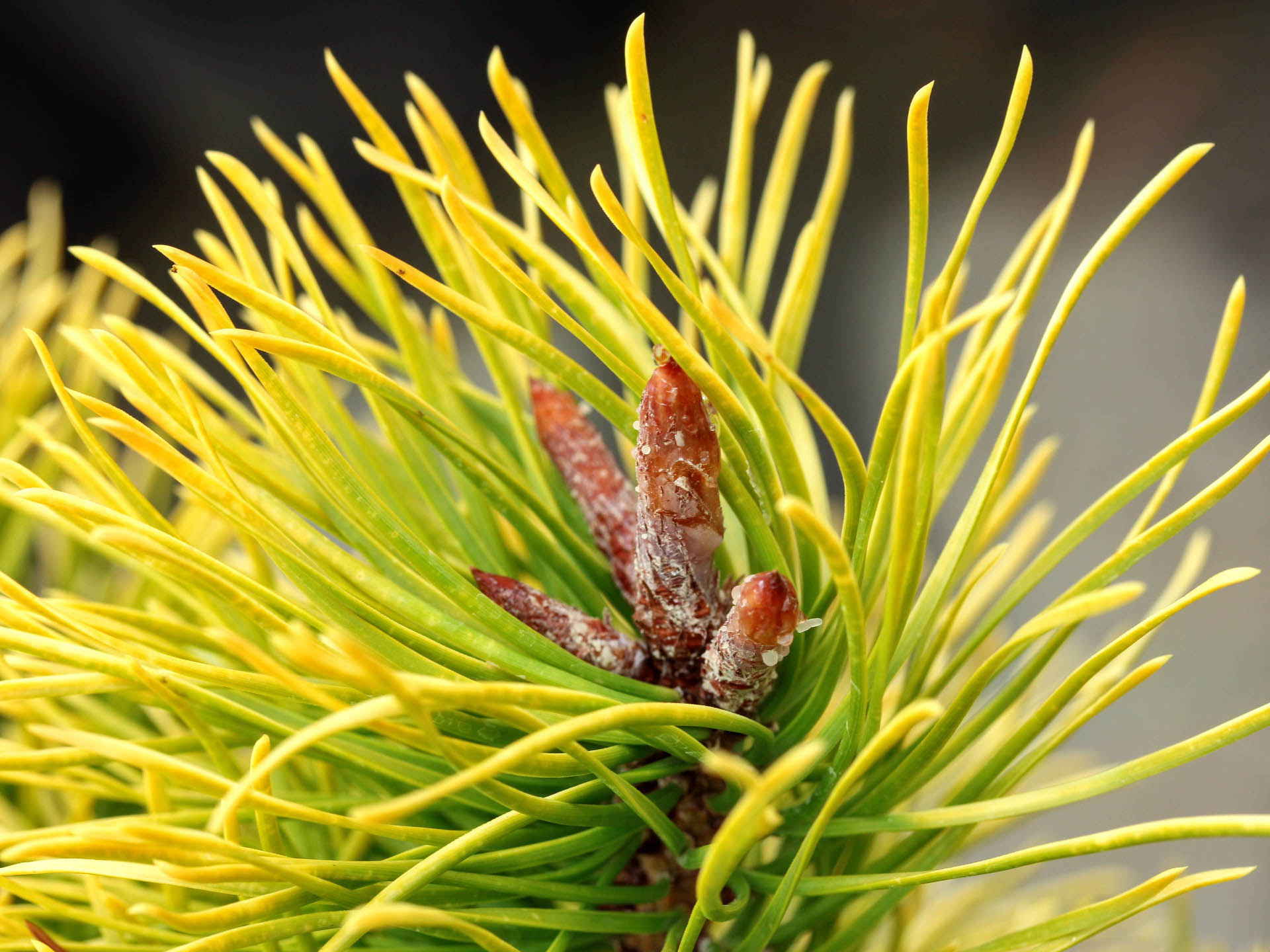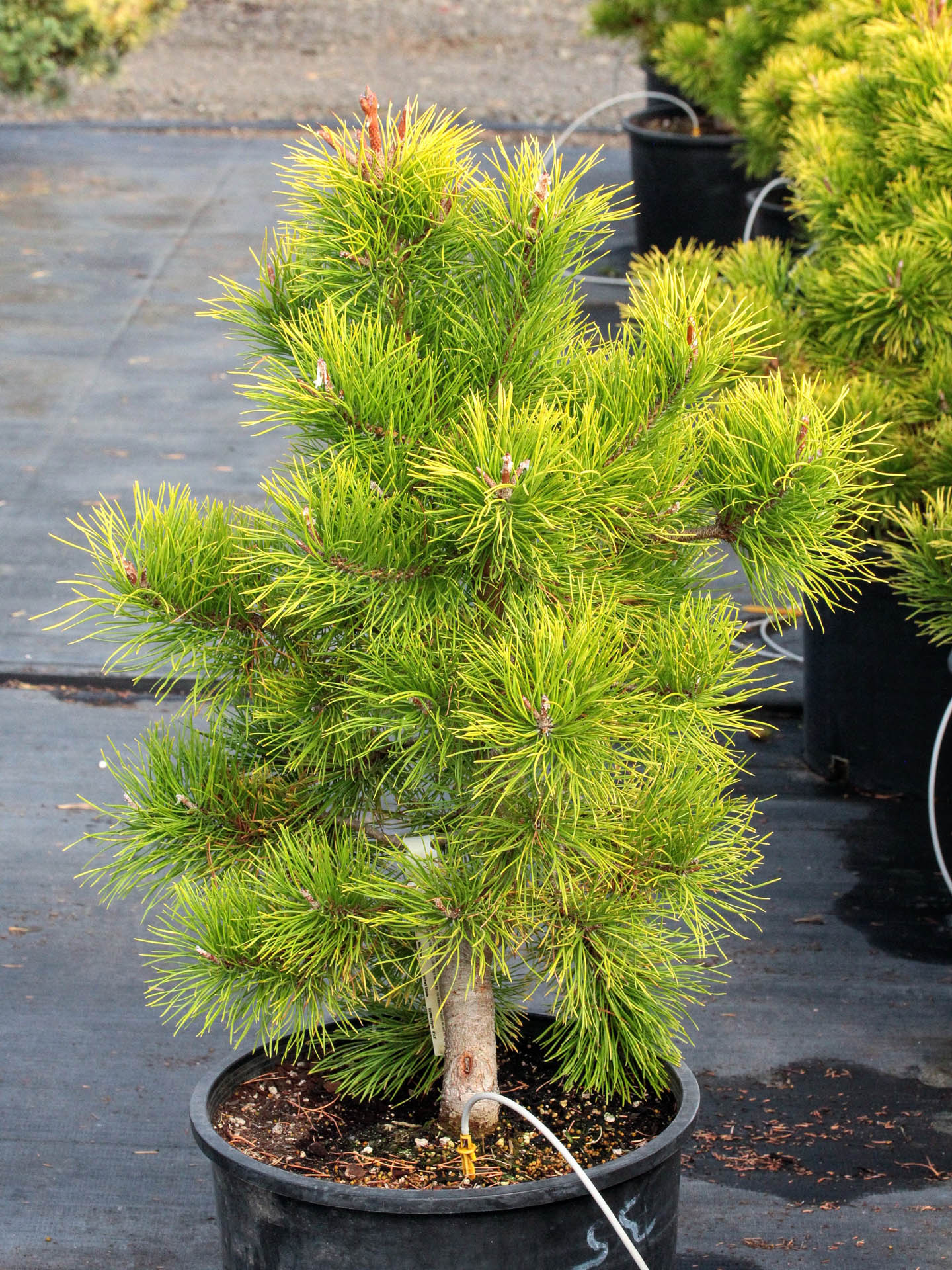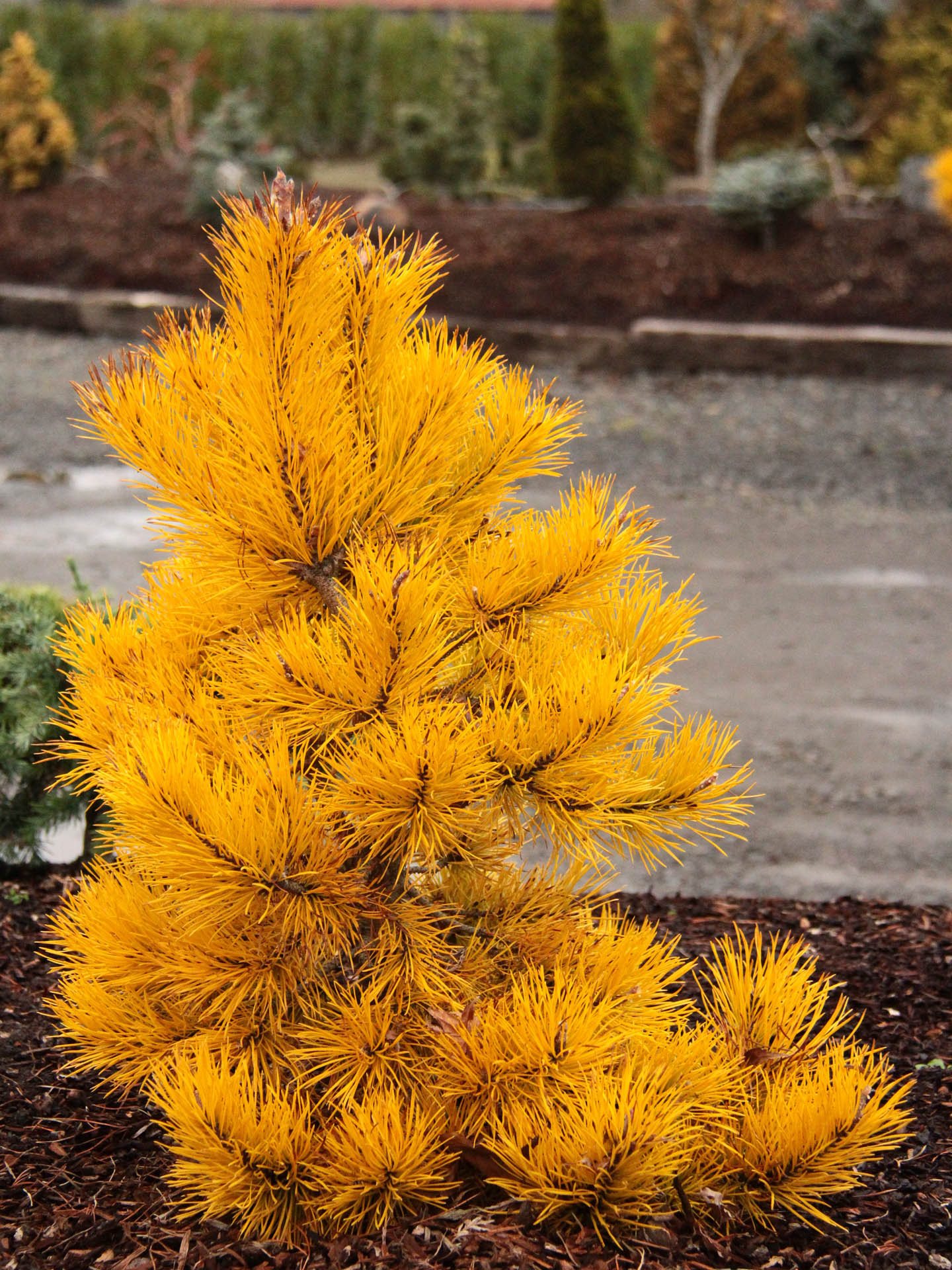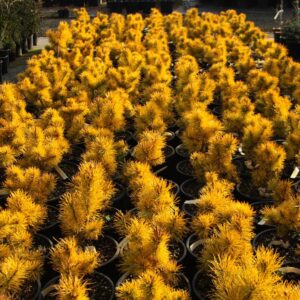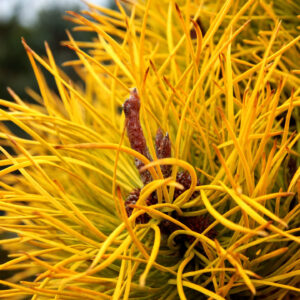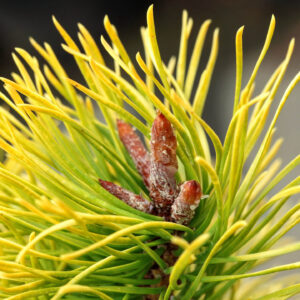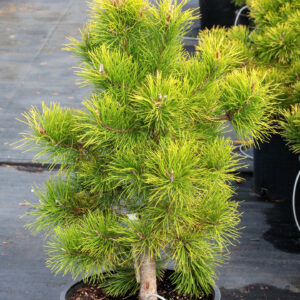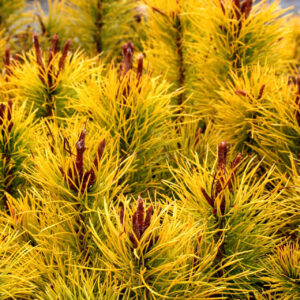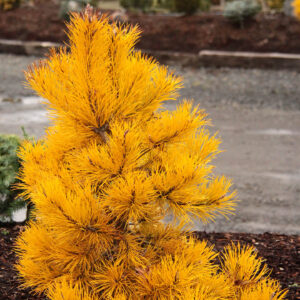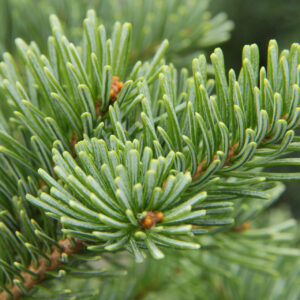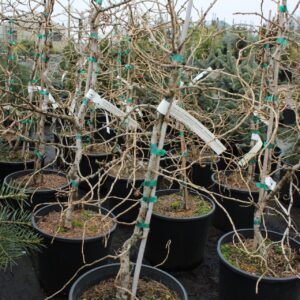Pinus contorta var. latifolia ‘Chief Joseph’ Lodgepole Pine
Description
Green summer needles begin turning gold in the fall. By winter, this plant is absolutely brilliant gold. It was found in the Wallowa Mountains by Doug Will of Sandy, OR during a hunting trip. He supposedly used an axe to dig it. This variety has proven to be difficult to propagate – yellow and some variegated conifers are typically more difficult to graft. Chief Joseph (1840-1904) was the chief of the Wallow Valley Nez Perce tribe. He became famous in 1877 for leading a three and a half month defensive war against the US Army who was attempting to forcibly remove the Natives to a reservation in Idaho. Don’t forget to check out the wide selection of Lodgepole Pines and other pine species.
USDA Hardiness Map

Plant Form
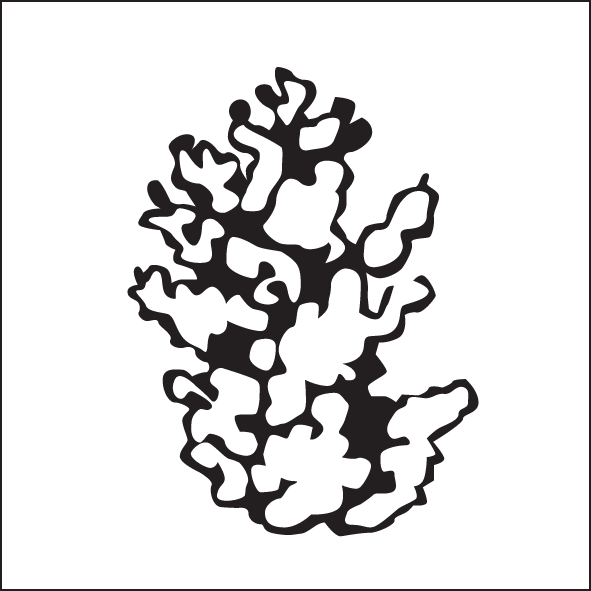
This little tree grows slowly, only 3″ to 6″ a year, reaching 4′ × 2′ in 10 years. It starts out in an irregular, conical shape that opens up as it grows. Its species name, contorta, refers to its crooked growth. Two to three-inch-long needles wider than the plain species give the tree a soft, fine-textured appearance. New growth emerges as medium green in the spring, lightening to chartreuse by late summer, then becoming a dazzling yellow-gold in the winter as the temperature drops. Full sun and cold temperatures bring out the brightest color of this tree, making it a shining focal point during the winter. Its small size and bright, cold-weather color make it perfect for small gardens as an accent plant, rock gardens, urban gardens, borders, mixed conifer gardens, courtyards, and cottage gardens.
In order to perform its best, ‘Chief Joseph’ needs full sun. It can adapt to various soil types, such as sandy, loamy, or nutrient-poor soil with an acidic to neutral pH, as long as they are well-draining since ‘Chief Joseph’ will not tolerate soggy soil. Water the tree deeply at planting and regularly during the first year; it will become drought-tolerant after establishing. It is tolerant of urban pollution and hardy in USDA zones 5-8.
Chief Joseph’s colorful foliage stands out against a backdrop of dark green companion trees and shrubs planted behind it, such as yews, hollies, boxwoods, azaleas, rhododendrons, mountain laurels, arborvitae, junipers, and cypress. Flowering perennials, such as iris, chrysanthemums, coneflowers, perennial verbena, lilyturf, asters, roses, Russian sage, lavender, columbines, lily-of-the-valley, and hellebores, provide contrasting accents when planted nearby. Ground covers, such as creeping phlox, periwinkle, pachysandra, hosta, catmint, and sedum, add color and texture at the base of the tree.
Additional information
| Weight | N/A |
|---|---|
| Latin Name | Pinus contorta var. latifolia 'Chief Joseph' |
| Common Name | Chief Joseph Lodgepole Pine |
| Plant Size | #1 Container, #10 Junior Specimen: 18-24", #10 Junior Specimen: 24-30", #2 Container, #3 Container, #5 Container, #7, 18-24", #7, 24-30", #7, 3-4', Specimen |
| Hardiness Zone | Zones 5-8 |
| Sun Exposure | Sun/Part Shade |
| Annual Growth | 3-6" |
| HXW@10 YEARS | 4'x2' |
| Color | Yellow/Gold |
| Form | Pyramidal |
| Growth Rate | Dwarf |
| Color | |
| Growth Rate | |
| Form | |
| Your auto-detected zip code |  |
| hardiness zone based on zip code |  |
| You can also try another zip code |


